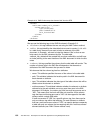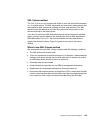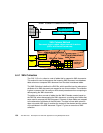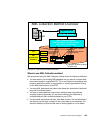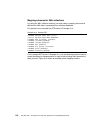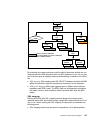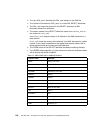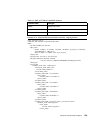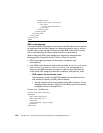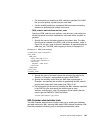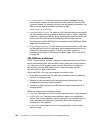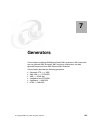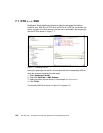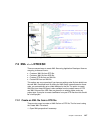
140 The XML Files: Development of XML/XSL Applications Using WebSphere Studio
</element_node>
<element_node name ="startdate">
<text_node>
<column name="emstdate"/>
</text_node>
</element_node>
</element_node>
</element_node>
</root_node>
</Xcollection>
</DAD>
RDB_node mapping
This method defines the location of the content of an XML element or the value of
an attribute so that the XML Extender can determine where to store or retrieve
the XML data. It uses the XML Extender-provided RDB_node, which contains
one or more definitions for tables, optional columns, and conditions.
When working with RDB_node mapping it is important to understand the
following points ( Example 5.6 and 5.7 refer to Tabes 5.5 and 5.6):
RDB_node mapping scheme can be used for composition and
decomposition.
Use <RDB_node> element in each of the top nodes for
element_node and for
each
attribute_node and text_node. An element_node corresponds to an
element in the XML document. An element_node can have child element
nodes. Refer SQL mapping for definition of attribute_node and text_node.
– RDB_node for the top element_node:
The top element_node in the DAD file identifies the root element of the
XML document. Specify an RDB_node as follows:
• Specify all tables that are associated with the XML document. For the
mapping scheme shown in Figure 5-8, the RDB_node for the element
employee is shown in Example 6-16.
Example 6-16 The RDB_node
<element_node name="employee">
<RDB_node>
<table name="employee"/>
<table name="emp_act"/>
<condition>
employee.empno = emp_act.empno
/condition>
</RDB_node>



